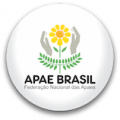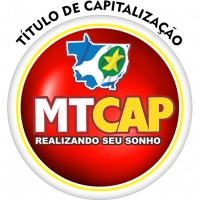This type of dependence varies widely with both substance and user. In its most intense form the user becomes obsessed with the drug and focuses virtually all his interest and activity on obtaining and using it. Diagnosing drug addiction (substance use disorder) requires a thorough evaluation and often includes an assessment by a psychiatrist, a psychologist, or a licensed alcohol and drug counselor. Blood, urine or other lab tests are used to assess drug use, but they’re not a diagnostic test for addiction.
What is the most common addiction?
Adolescents are especially at risk for developing SUD due to exposure. Adolescents who start using substances early are more likely tremor national institute of neurological disorders and stroke to develop an SUD. About 70% percent of people who began using at age 13 have an SUD compared to 27% who started at age 17.
What environmental factors increase the risk of addiction?
With professional medical treatment and commitment, millions of people have overcome substance use disorders and behavioral addictions to live happy, healthy lives. Talk to your provider about a treatment plan that works for you. In severe cases of drug abuse, such as opioid addiction, a combination of medication and behavioral intervention may be necessary to manage withdrawal symptoms.
Getting help for addictions
People who are struggle with other types of addiction can find out about self-help groups in their community either by an internet search or by asking a doctor or nurse for information. Fully licensed residential facilities are available to structure a 24-hour care program, provide a safe housing environment, and supply any necessary medical interventions or assistance. This is the most common form of treatment following detoxification.
How can I help a loved one with substance use disorder?
Because of the possibility of relapse, you need ongoing treatment. Your healthcare provider should review your treatment plan with you and change it based on your changing needs. Medications can help modify your brain chemistry to help treat certain SUDs. In addition, it’s more likely that someone will use substances that are legally and/or readily available (like alcohol and tobacco). Opioids are another example of this — the availability and volume of prescription opioids make them easier to access.
Experiencing Drug Addiction Symptoms
Drug addiction, or substance use disorder, is a serious mental illness that affects a person’s health, relationships, finances, and well-being. People with substance use disorder usually struggle with relapse for their entire lives and often go through continuous cycles of intoxication, withdrawal, and preoccupation with the substance. Though there are risk factors for developing substance use disorder, anyone can develop it. Treatment is available for people struggling with substance use disorder. As with other diseases and disorders, the likelihood of developing an addiction differs from person to person, and no single factor determines whether a person will become addicted to drugs. In general, the more risk factors a person has, the greater the chance that taking drugs will lead to drug use and addiction.
Substance use disorder can significantly impact your health, relationships and overall quality of life. It’s crucial to seek help as soon as you develop signs of SUD. SUD exists on a spectrum and may be mild, moderate or severe. It typically involves an overpowering desire to use the substance, increased tolerance to the substance and/or withdrawal symptoms when you stop taking the substance. It is common, if not normal, to go through a stage of engaging in substance use or an addictive behavior without believing you are addicted. This is so common, in fact, that it has a name, the pre-contemplation stage.
In 2017, an electronic device called the NSS-2 Bridge became available to reduce opiate withdrawal. The device sits behind the ear and gives off electrical pulses to trigger certain nerves that might provide relief from withdrawal symptoms. The first step towards recovery is acknowledging that substance use has become a problem in the person’s life which is disrupting the quality of their life. This can result from impairment in school, work, social, recreational or other important areas of function. Being addicted to something means that not having it causes withdrawal symptoms, or a “come down”. Because this can be unpleasant, it’s easier to carry on having or doing what you crave, and so the cycle continues.
In 80 percent of cases, a treatment clinic will use medications to reduce withdrawal symptoms, according to the Substance Abuse and Mental Health Services Administration (SAMHSA). Addictive disorders are a group of disorders that can cause physical and psychological damage. Receiving treatment is essential for breaking the cycle of addiction. Understanding the pathways in which drugs act and how drugs can the buddhist view on addiction multiple perspectives alter those pathways is key when examining the biological basis of drug addiction. The reward pathway, known as the mesolimbic pathway,[26] or its extension, the mesocorticolimbic pathway, is characterized by the interaction of several areas of the brain. With the urgent need for mental health solutions, psychedelic treatments are developed carefully, while underground therapists offer a stopgap measure.
However, these tests may be used for monitoring treatment and recovery. Behavioral addictions can occur with any activity that’s capable of stimulating your brain’s reward system. Healthcare providers and the medical community now call substance addiction substance use disorder. The American Psychiatric Association’s Diagnostic and Statistical Manual of Mental Disorders (DSM-5) has concrete diagnostic criteria for substance use disorders.
- Drug addiction can start with experimental use of a recreational drug in social situations, and, for some people, the drug use becomes more frequent.
- The self-help support group message is that addiction is an ongoing disorder with a danger of relapse.
- The proliferation was isolated to a brain region known as the ventral tegmental area, which is involved in reward learning and addiction.
- A trained provider can help guide you to the treatment you need.
It can involve behaviors that provide opportunities for immediate reward. In the past, addiction was thought to only encompass substance abuse, but the definition has been expanded to include activities like gambling as well as gaming ketamine withdrawal symptoms and recovery and shopping. It’s also important to note that addiction is about the underlying neurology of the brain and not about the outward behaviors. With appropriate treatment, people with addictions can go on to live happy, healthy lives.
Some drugs, such as opioid painkillers, have a higher risk and cause addiction more quickly than others. Ultimately, a better understanding of adaptive myelination might reveal new strategies to help people recover from opioid addiction. Perhaps the process can be reversed and an addiction unlearned. In the new study, the precise biochemical steps by which a drug reward leads to myelination are not completely clear.
And other things you enjoyed, like food and hanging out with family, may give you less pleasure. Drug misuseis when you use legal or illegal substances in ways you shouldn’t. You might take more than the regular dose of pills or use someone else’s prescription.
The DSM-5 doesn’t currently include other behavioral addictions due to a lack of research on them. However, any activity or habit that becomes all-consuming and negatively impacts your daily functioning can cause significant mental, social and physical health issues, as well as financial issues in some cases. Most drugs affect the brain’s “reward circuit,” causing euphoria as well as flooding it with the chemical messenger dopamine. A properly functioning reward system motivates a person to repeat behaviors needed to thrive, such as eating and spending time with loved ones. Surges of dopamine in the reward circuit cause the reinforcement of pleasurable but unhealthy behaviors like taking drugs, leading people to repeat the behavior again and again.





